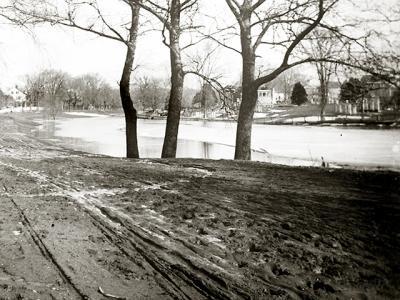Point of View: Sunday, Sunday
Point of View: Sunday, Sunday
In rugby it would have been a try, a score, but no, in football, it seems, if you catch the ball and then put it over the line with your hands — as in touch it down — it doesn’t count as a touchdown. It broke the plane and we’re in pain. You know the Steelers won the game, Patriot fans. You know we won it. And we won it even without Antonio Brown.
What is this? Football or forensic science? Where hair follicles are examined under high-powered microscopes for DNA evidence.
Those — and not all of them Steeler fans by any means — with whom I’ve talked about this are in general agreement that the Talmudic touchdown catch rule, which insists that “the process [whatever that is] must be completed” should be changed. If it breaks the plane, a touchdown’s gained.
But on to other things, to the “giant Christmas gift” to the working people of America. I have this to say about that: No Republican should ever be returned to office in this land, not one.
A writer interviewed in The Times’s Book Review recently said we live mundane lives. Actually, he said it twice. Well why then am I still freaking out about the outcome of the Steelers-Patriots game and the tax “reform” bill when my head should be stuffed into the crease of a couch pillow, as O’en’s was that Saturday night he was in my care, bored out of his squash.
No, it was not a great day for us. We, O’en and I, did nothing of note, and so mundane — though in the dictionary it merely says it is to be earthbound, which is hard to deny when you are, in fact, for the moment, earthbound — I suppose you could say it was. Boring even. Mary would have freed us from our torpor, but she was 3,000 miles away. Life with Mary, though we are earthbound, is never mundane.
Sunday, however, was an entirely different matter. I had planned it out and it all came to pass as I had planned, save for the Steelers’ “loss.” (Patriot fans, I find, are the smuggest of all, which annoys the hell out of me, but on to other things.)
At training O’en shined. As I’ve said, he knows the drill, what’s required. Once in the Wainscott Farms bubble, he’s all business. It’s a marvel. I was all over him afterward, so proud, so proud. Later, I took him to Georgie and Gavin’s where he reveled in the glee of children. That revelry no longer enlivens our house, which is as neat as a pin. Not that that is all bad. Serenity isn’t to be sniffed at, yet it’s clear that O’en misses socializing, mixing it up. We’ve thought of getting him a friend, especially in those moments when his head is stuffed into the crease of a couch pillow, as if it were a rebuke of sorts, as if he were saying, “Life is so mundane, so mundane.”
But then there was Sunday. I would like to think I fueled his spirit, just as he fueled mine.
If this is as good as life gets, I don’t mind that it’s mundane.
And, anyway, Mary will be back in just a day.

